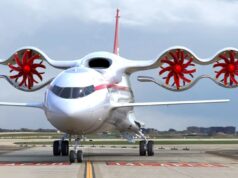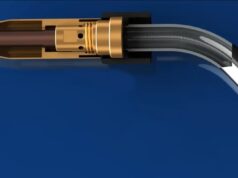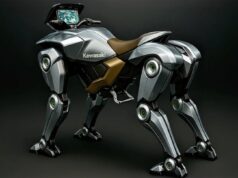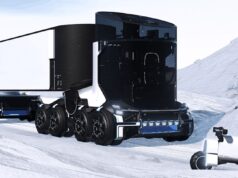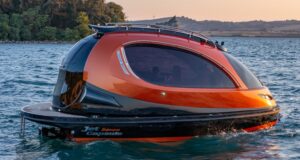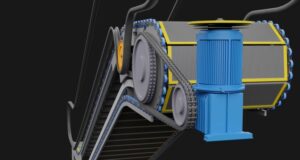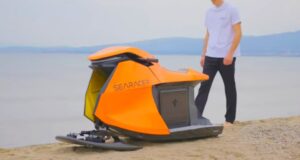The “Sky OV evo” designed by Oscar Viñals is a concept plane based on the future proposal about of the “blended wing body” with two wings on top of the fuselage in the shape of a double arch. This entirely new aircraft shape looks similar to the “flying wing” design used by military aircraft such as the iconic B-2 bomber, but the blended wing has more volume in the middle section.
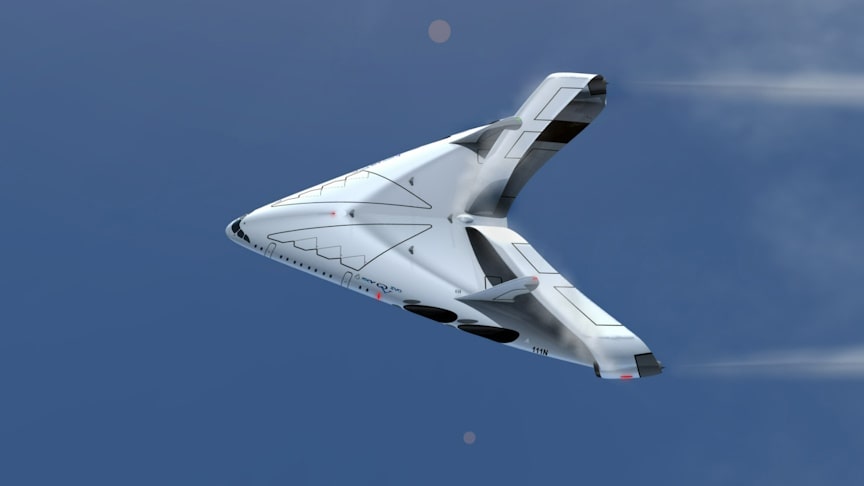
source-image: Oscar Viñals
The blended wing allows the entire aircraft to generate lift, minimizing drag. NASA says that this shape “helps to increase fuel economy and creates larger payload (cargo or passenger) areas in the center of the aircraft’s fuselage.”
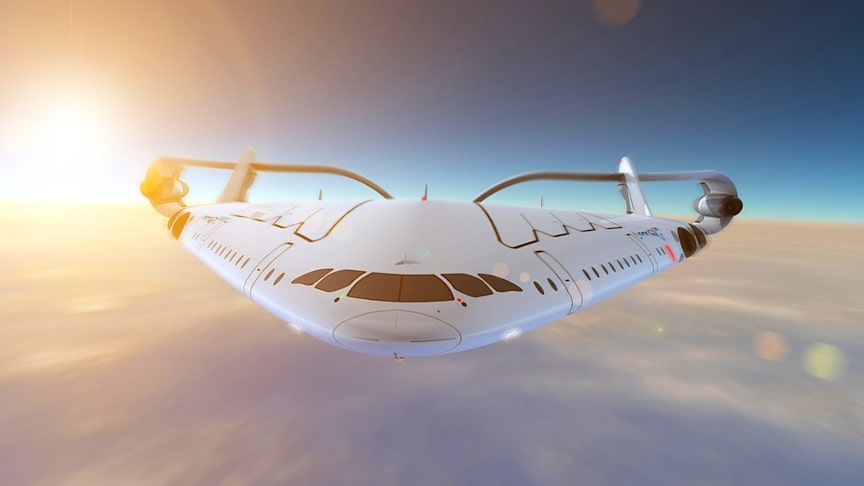
source-image: Oscar Viñals
An aircraft of this type would have a wingspan slightly greater than a Boeing 747 and could operate from existing airport terminals, adding that the plane would also “weigh less, generate less noise and emissions, and cost less to operate than an equally advanced conventional transport aircraft.

source-image: Oscar Viñals
Inspired on the new kind of airplanes engines with bladeless turbojet engines (type Dyson concept), a super quite system at subsonic, transonic speed and engines based on pulse detonation more efficient than current turbojet engines with skills similar to a ramjet engine.
Advertisement
Built with the latest technology in aperiodic metamaterial, Magic-angle graphene structures (superconductivity), Twistronics (is a field of study that emerged from the intersection of nanotechnology and materials science), quantum technology and more.
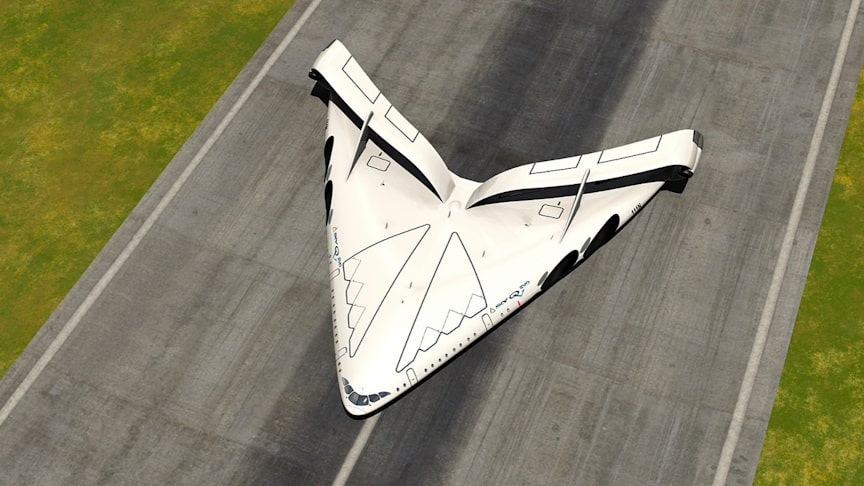
source-image: Oscar Viñals
More efficient and with a better performance, totally eco-friendly, powered by hydrogen fuel and electric power, capable to cover long distances with a very low hydrogen fuel consumption, zero emissions and a cruise speed of Mach 1.
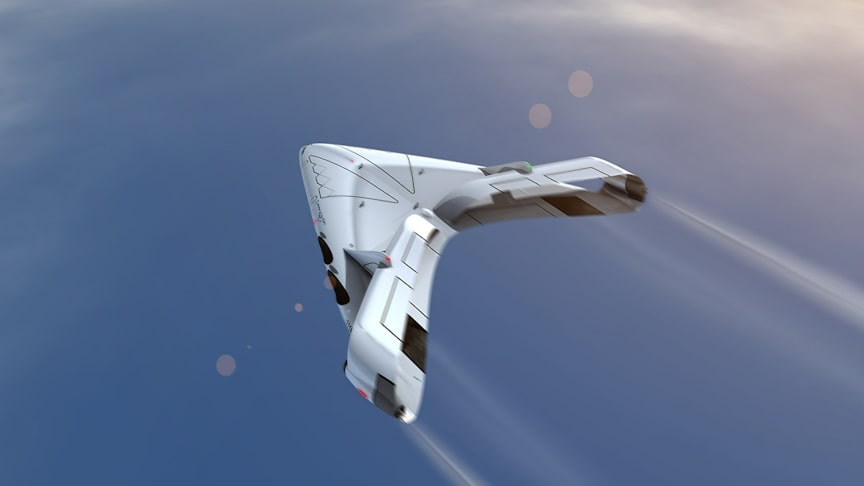
source-image: Oscar Viñals
This concept plane could transport as standar configuration 200 passengers (maximum 300) in a very comfortable conditions, with a multi-configuration space and all kind of commodities and luxury devices.- Fuselage’s paint with Quantum Solar Dots QSD.
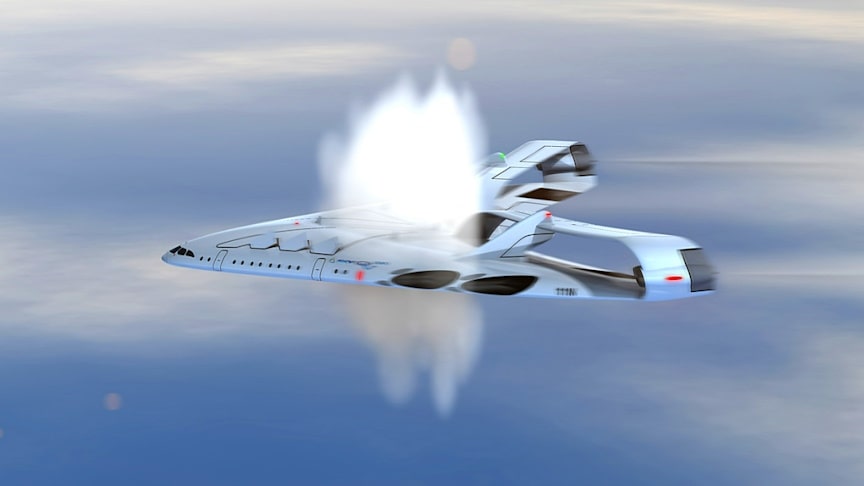
source-image: Oscar Viñals
Quantum solar dot cell manufacturing refers to solar cell that uses quantum dots to absorb the photovoltaic material. These cells are used to replace the bulky material such as silicon or copper indium gallium selenide and have the potential to reduce wasteful heat and capitalise on the amount of sun’s energy for conversion to electricity.
Advertisement
This concept plane could have integrated into the ceiling, quantum solar dots that could produce electric power from the Sun beams. – Hybrid Dyson Fluidic Propulsion Air Multiplier (FPAM) bladeless engine.
The props on today’s aircraft are inefficient, noisy & dangerous — but an innovative new bladeless propulsion system offers an alternative for 21st century aviation. Dyson has been making bladeless fans for a few years now that accelerate a consistent stream of air without exposed blades.

